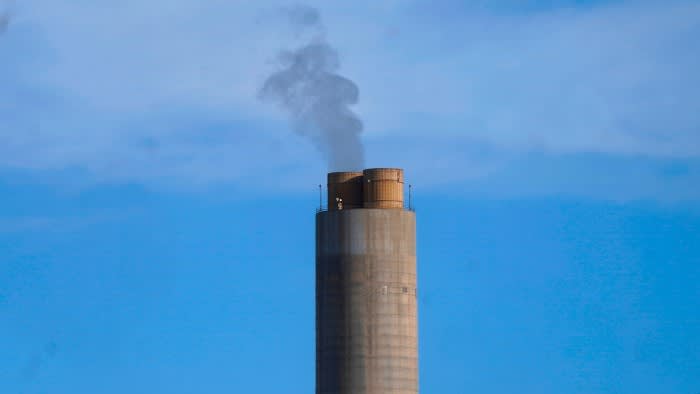Unlock editor summary for free
Rula Khalaf, editor of the FT, picks her favorite stories in this weekly newsletter.
The staggering demand for electricity needed to power next-generation technologies is forcing the US to rely on yesterday’s fuel source: coal.
Retirement dates for the country’s aging fleet of coal-fired power plants are being pushed back as concerns about grid reliability and expectations of soaring electricity demand force operators to keep capacity online.
The move to phase out these facilities highlights a growing dilemma facing the Biden administration as the US race for leadership in artificial intelligence and manufacturing leads to unprecedented growth in energy demand, which collides with decarbonisation goals. The International Energy Agency estimates that AI app ChatGPT uses almost 10 times more electricity than Google Search.
Roughly 54 gigawatts of U.S. coal-fired power generation assets, about 4 percent of the country’s total electricity capacity, are expected to be retired by the end of the decade, a 40 percent downward revision from last year, according to S&P Global Commodity Insights, citing to reliability concerns.
“You can’t replace fossil plants fast enough to meet demand,” said Joe Kraft, CEO of Alliance Resource Partners, one of the largest U.S. coal producers. “To be first in AI, we’re going to have to embrace maintaining what we have.”
Operators delaying retirements include Alliant Energy, which last week delayed plans to convert its Wisconsin coal plant to gas from 2025 to 2028. Earlier this year, FirstEnergy announced it was scrapping its 2030 phase-out goal of coal, citing “resource adequacy concerns”.

Grid Strategies, a consultancy, forecast US electricity demand growth of 4.7% over the next five years, nearly doubling its forecast from a year earlier, citing new manufacturing and industrial capacity and data centers used to power everything – from AI to crypto mining to cloud. A study released Wednesday by the Electric Power Research Institute found that data centers will make up 9 percent of U.S. electricity demand by 2030, more than double current levels.
The White House has set a goal of achieving a carbon-free power sector by 2035. Last month, the Environmental Protection Agency finalized controversial rules to phase out coal plants starting in 2032 unless they install expensive carbon capture systems.
The EPA found in its analyzes that the energy sector can meet demand while reducing pollution and providing reliable, affordable electricity under these rules, a spokesman said, adding that the agency “believes the rules are on solid legal ground.”
Indiana is leading a group of 25 states in a lawsuit to halt the EPA rules.
“We need more energy, not less,” Indiana’s Republican governor, Eric Holcomb, told the Financial Times. “We as Americans cannot afford to lose the AI war.”

U.S. coal-fired power generation has been in long-term decline, accounting for 16 percent of the nation’s electricity supply last year, down from nearly 40 percent in 2014, according to the U.S. Energy Information Administration.
Seth Fister, a data analyst at the Institute for Energy Economics and Financial Analysis, cautioned against equating reports of retirement delays with the older generation. The EIA projects that U.S. coal-fired power generation will fall another 4 percent this year, and coal plant utilization rates remain low.
“Simply postponing the retirement date doesn’t mean those plants will be used,” Pfister said. “The trajectory of coal hasn’t really changed.”
